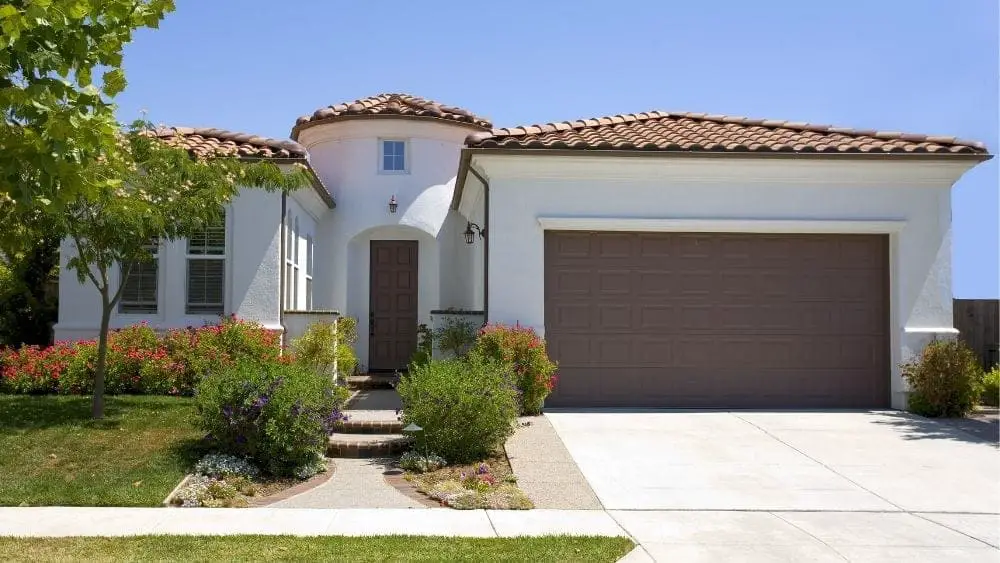Hacienda homes, with their timeless elegance and distinctive architecture, stand as a testament to the rich cultural heritage of Spanish colonial design. One of the most striking features of these homes is the combination of white stucco walls and red clay roofs, a pairing that not only enhances aesthetic appeal but also serves practical purposes.
The Historical Significance of Hacienda Homes
Hacienda homes have their origins in the vast estates of colonial Latin America, where they served as the residences of wealthy landowners. These estates were not only homes but also centers of agricultural production, often sprawling over large tracts of land. The architecture of hacienda homes reflects a blend of Spanish, Moorish, and indigenous influences, resulting in a style that is both functional and visually stunning.
White Stucco: A Canvas of Elegance
White stucco is more than just a building material; it is an integral part of the hacienda home’s charm. This smooth, durable plaster is applied to the exterior walls, creating a pristine white surface that exudes a sense of tranquility and purity. The use of white stucco offers several advantages:
Aesthetic Appeal
The white stucco provides a blank canvas that highlights the architectural features of the home, such as arches, columns, and intricate wrought-iron details. The clean, bright surface reflects sunlight, creating a dazzling effect that enhances the home’s visual appeal. This timeless look fits seamlessly into both traditional and contemporary settings.
Thermal Benefits
White stucco is not just beautiful; it’s also practical. The light color helps to reflect heat, keeping the interior of the home cooler during hot weather. This is particularly beneficial in the warm climates where hacienda homes are commonly found. The thick stucco walls also provide excellent insulation, maintaining a stable indoor temperature and contributing to energy efficiency.
Durability
Stucco is known for its durability and low maintenance. When applied correctly, it can withstand harsh weather conditions, including intense sunlight, heavy rain, and strong winds. This longevity makes it an ideal choice for the exteriors of hacienda homes, ensuring they remain beautiful for years to come.
Red Clay Roofs: A Signature Element
The red clay roof is perhaps the most iconic feature of a hacienda home. These roofs are made from terracotta tiles, which are baked at high temperatures to achieve their characteristic red hue. The advantages of red clay roofs go beyond their striking appearance:
Visual Contrast
The red clay tiles provide a vivid contrast to the white stucco walls, creating a visually appealing combination that is instantly recognizable. This contrast not only enhances the overall aesthetic of the home but also emphasizes its architectural features, making them stand out.
Durability and Longevity
Red clay tiles are incredibly durable and can last for decades with minimal maintenance. They are resistant to fire, insects, and rot, making them a practical choice for roofing material. Their ability to withstand extreme weather conditions adds to their longevity, ensuring that the roof remains intact and functional over the years.
Energy Efficiency
Like white stucco, red clay tiles also contribute to the energy efficiency of the home. The natural properties of clay allow it to absorb and release heat slowly, helping to regulate the temperature inside the house. This thermal mass effect keeps the home cooler in the summer and warmer in the winter, reducing the need for artificial heating and cooling.
Architectural Harmony
The combination of white stucco and red clay roofs creates a harmonious balance that defines the essence of hacienda homes. This pairing not only reflects the historical and cultural significance of the architecture but also enhances the home’s functionality and comfort. The smooth, bright walls contrast beautifully with the textured, earthy tiles, resulting in a cohesive and appealing design.
Cultural Significance
The architectural elements of hacienda homes are deeply rooted in cultural traditions. The use of stucco and clay dates back to ancient civilizations, where these materials were valued for their availability and effectiveness. Over time, they have come to symbolize a connection to the past, blending historical techniques with modern living standards.
Modern Adaptations
While the traditional hacienda style remains popular, modern adaptations have introduced new materials and techniques to enhance these homes further. Innovations in stucco application and advancements in roofing technology have allowed homeowners to enjoy the classic look with improved performance and durability.
Sustainable Practices
Modern hacienda homes often incorporate sustainable practices, such as using eco-friendly stucco mixes and recycled clay tiles. These practices not only reduce environmental impact but also promote energy efficiency and resource conservation. Sustainable hacienda homes maintain the traditional aesthetic while embracing contemporary values of environmental stewardship.
Contemporary Design Elements
In addition to sustainability, contemporary design elements are seamlessly integrated into hacienda homes. Open floor plans, large windows, and modern amenities blend with the classic white stucco and red clay roofs, creating a perfect fusion of old and new. This adaptability ensures that hacienda homes remain relevant and desirable in today’s housing market.
Conclusion
The beauty of white stucco and red clay roofs in hacienda homes lies in their timeless elegance and practical benefits. These materials, steeped in history and tradition, offer a unique combination of aesthetic appeal, durability, and energy efficiency. Whether preserving the traditional style or incorporating modern adaptations, the essence of hacienda architecture continues to captivate homeowners and architects alike.


